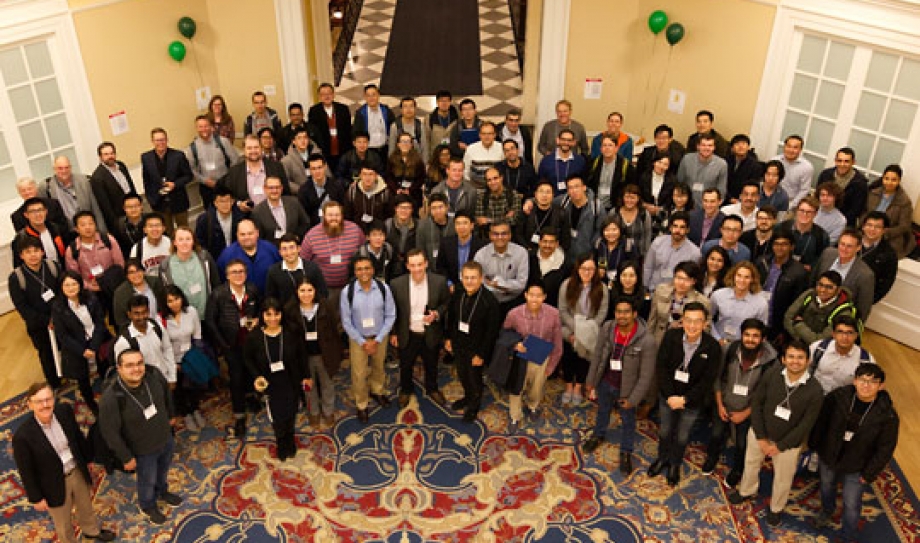
Since UVA’s School of Engineering and Applied Science was tapped in 2017 to lead a $29.7 million, multi-university research effort to take computing into the 21st century and beyond, researchers have completed five years of groundbreaking work that will revolutionize scientists’ ability to apply data.
Faster analysis of massive datasets exponentially accelerates discovery of solutions to the worlds’ most vexing problems. For example, rapidly accumulating patient data around bioinformatics holds the key to quickly pinpoint more effective treatments. But access to the data is not enough. Analyzing it requires computer processing speeds never imagined.
Enter the Center for Intelligent Storage in Processing, known as CRISP. Center researchers have been developing new computer architectures to replace outdated, formerly “state-of-the-art” designs that lack 21st century processing power. The UVA-led center is part of the Joint University Microelectronics Program funded and managed by North Carolina-based Semiconductor Research Corporation, a consortium that includes engineers and scientists from technology companies, universities and government agencies.
The new architectures integrate processing and memory into a single unit. By tightly coupling the processing into the data storage, speeds can be dramatically increased by eliminating data movement – the source of bottlenecks in today’s systems.
The novel “processing in memory” approach equates to past evolutions in computing, like the introduction of integrated circuits and the paradigm shift from mainframes to personal computers and workstations.
UVA’s CRISP team researchers are Kevin Skadron, Harry Douglas Forsyth Professor of Computer Science, who directed the UVA-led initiative; Samira Khan, associate professor of computer science and an expert in computer architecture and its implications for software systems; and Mircea Stan, Virginia Microelectronics Consortium Professor in electrical and computer engineering and an expert in the design of high-performance, low-power chips and circuits.
UVA’s university collaborators included Cornell University; Georgia Tech, Pennsylvania State University, the University of California in Los Angeles, the University of California in San Diego, the University of Washington, the University of Wisconsin and the University of Pennsylvania.
The research teams recently gathered in Charlottesville to summarize findings from their half-decade of cross-cutting research. The collaboration has identified many potential pathways toward significant speedups. Their efforts were focused in three simultaneous tracks: hardware design, system software support and application case studies to quantify results.
One of the application case studies was genomics for cancer drug selection. With their novel designs, CRISP researchers dramatically shortened sequence alignment – the key to finding patterns in genetic data to inform more targeted cancer treatments.
“Our recent results show that we can speed up sequence alignment from 20 hours to less than a second, and we believe that further speedups of 100 times or more are possible with the new architectures center researchers are developing,” said Tajana Rosing, professor in the Department of Computer Science and Engineering at the University of California at San Diego, in a 2020 article about the breakthrough.
It was an early win for the center that would quickly became a game changer when the world was gripped by a pandemic early in 2020.
“CRISP expanded the applications of our novel architectures to not only target cancer but viral analytics and microbiome analysis to dramatically accelerate COVID sequencing and variant analysis,” Skadron said. “The work resulted in a tool that is being used in all of San Diego County for analyzing COVID samples.”
In the case studies for genomics, viral analytics and microbiome analysis, Rosing’s estimation was realized, and researchers demonstrated speedups that are 100 times faster than state of the art. These dramatic improvements can be applied to bioinformatics for pinpointing better cancer treatments as well as used in future epidemics from emerging viruses and pathogens.
These and all the investigators’ findings – there were application case studies in database capacity and video analytics too – have resulted in a wealth of discovery.
CRISP investigators and graduate students have published 391 papers, released 31 new software tools, and submitted 22 patent applications of which three have already been granted by the U.S. Patent and Trademark Office.
“There is still quite a lot of work to do to explore this design space and develop the most promising designs, so we look forward to seeing this kind of work continue and believe that CRISP has provided a good foundation for the next generation of researchers,” Skadron said.
The collaborators’ research and tools add to an arsenal that computer scientists and computing engineers can access for future work in the worldwide movement toward realizing the fastest computers.
Last year, CRISP researchers started sharing results with their peers and in one major effort led a workshop at the IEEE/ACM MICRO-55, the major conference in computer architecture. Their presentation was shared with a standing-room only audience.
For Skadron, who also chaired UVA’s Department of Computer Science four of the five years, a major emphasis of the collaboration was offering research opportunities to graduate students.
The center has funded 205 graduate students across the participating universities and 89 of those have graduated and gone on to jobs in important sectors such as the U.S. semiconductor industry and as faculty in U.S. universities.
The CRISP initiative has also provided opportunities, such as 56 internships for student researchers while also supporting innovations in the classroom. Center participants have collaborated with the joint university microelectronics program sponsor companies, including IBM, Intel, Micron, Samsung, Raytheon and ARM, among others, on research throughout the program.
“Our goal is to make the work enriching for our researchers and graduate students, but it also provides faculty and students participating in the center a lot of visibility,” Skadron said. “We’ve had a lot of industry collaborations.”
